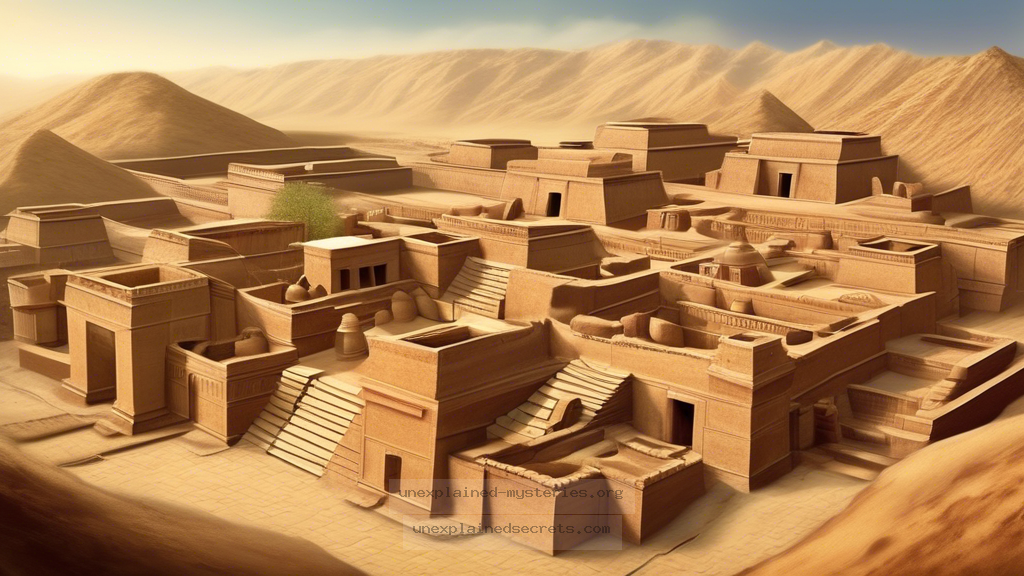What Happened to the Advanced Civilization of the Indus Valley?
What Happened to the Advanced Civilization of the Indus Valley?
The Indus Valley Civilization (IVC), one of the world’s earliest urban cultures, flourished around 2500 BCE in what is now modern-day Pakistan and northwest India. Despite its advanced city planning, architecture, and trade systems, the civilization mysteriously declined around 1900 BCE, leaving historians and archaeologists puzzled. What led to the collapse of this sophisticated society? Understanding this enigma not only sheds light on the past but also provides insights into how civilizations can rise and fall, a lesson that remains relevant today.
Historical Context of the Indus Valley Civilization
The Indus Valley Civilization is notable for its remarkable urban centers, such as Harappa and Mohenjo-Daro. These cities featured advanced drainage systems, standardized weights and measures, and intricate pottery and crafts. The civilization was at its peak during the Mature Harappan phase (c. 2600–1900 BCE) and covered a vast area of around 1.25 million square kilometers. Its economy relied heavily on agriculture, trade, and crafts, indicating a complex and organized society.
One of the most fascinating aspects of the IVC is its script, which remains undeciphered to this day. The absence of written records or monumental inscriptions has left many questions unanswered. The civilization’s sudden decline in the late Bronze Age, marked by the abandonment of cities, remains a subject of intense study and debate among scholars.
Core Theories Behind the Decline
Several theories have been proposed to explain the decline of the Indus Valley Civilization. These range from environmental changes to socio-political factors. Below are some of the most prominent hypotheses:
- Climate Change: Some researchers suggest that a significant shift in climate could have led to the decline of agriculture, the backbone of the IVC economy. Evidence indicates that a shift from a monsoon-based climate to arid conditions could have decreased water availability.
- River Dynamics: The Indus River and its tributaries were essential for irrigation. Geological studies suggest that changes in river patterns, such as the drying up of the Ghaggar-Hakra river system, could have caused agricultural collapse.
- Invasion Theories: Though widely criticized, some theories propose that invasions by Indo-Aryan tribes could have contributed to the civilization’s decline. However, archaeological evidence for violent conflict is limited.
- Internal Strife: Social unrest due to economic disparities or resource allocation issues could have led to the collapse of centralized governance.
Evidence of Environmental Changes
One compelling line of evidence supporting the climate change hypothesis comes from sediment analysis. Studies of lake sediments in the region show a pattern of aridification starting around 2200 BCE, coinciding with the decline of the IVC. Additionally, the presence of desiccated riverbeds suggests that agricultural lands may have been rendered unproductive, pushing inhabitants to abandon their cities.
To further illustrate these environmental changes, researchers have utilized paleobotanical data, indicating a decline in the cultivation of key crops such as wheat and barley during this period. The shift in climate would have had significant implications for food security, leading to widespread migration and eventual societal collapse.
Archaeological Discoveries
Archaeological excavations have uncovered evidence of the Indus Valley’s advanced urban planning and infrastructure. The presence of large granaries indicates a well-organized system for food storage, which suggests that the society had the means to manage resources efficiently. However, as sites began to show signs of abandonment, researchers noted the sudden disappearance of urban artifacts, which speaks to a rapid decline rather than a gradual decay.
For instance, the site of Mohenjo-Daro was found with buildings in disrepair, and evidence of fires suggests that the city may have suffered from both abandonment and destruction. The lack of continuity in cultural artifacts also points towards a significant disruption in the societal fabric.
Comparative Analysis with Other Civilizations
The decline of the Indus Valley Civilization can be compared to the fall of other ancient civilizations such as the Maya and the Akkadian Empire. Each of these societies experienced a combination of environmental stress, resource depletion, and social upheaval that contributed to their eventual collapse.
| Civilization | Peak Period | Collapse Factors |
|---|---|---|
| Indus Valley | 2600–1900 BCE | Climate change, river dynamics, possible invasions |
| Maya | 250–900 CE | Drought, warfare, environmental degradation |
| Akkadian Empire | 2334–2154 BCE | Climate change, resource depletion, internal conflict |
Common Misconceptions and Clarifications
One common misconception about the Indus Valley Civilization is that it was a highly homogeneous society. In reality, archaeological findings suggest a diversity of cultures and practices, indicating that the civilization was likely composed of various groups with different lifestyles and beliefs.
Another misconception is the belief that the IVC’s decline was solely due to foreign invasions. While there is evidence of migration and interaction with neighboring cultures, most scholars agree that internal factors, particularly environmental changes and resource management, played a more significant role.
Best Practices for Investigating Lost Civilizations
When studying lost civilizations like the Indus Valley, researchers employ a multidisciplinary approach that combines archaeology, anthropology, geology, and environmental science. Here are some best practices:
- Utilizing Technology: Tools like Ground Penetrating Radar (GPR) and remote sensing can reveal hidden structures and urban layouts without excavation.
- Interdisciplinary Collaboration: Collaborating with experts in various fields can provide a more holistic understanding of the factors contributing to a civilization’s rise and fall.
- Public Engagement: Involving local communities in research can yield valuable insights and foster a sense of stewardship over cultural heritage.
Future Developments in Indus Valley Research
The study of the Indus Valley Civilization is an ongoing endeavor, with new archaeological sites being discovered and excavated regularly. Advances in technology, such as isotopic analysis and DNA studies, may soon provide deeper insights into the social structures, health, and genetic diversity of the people of the IVC.
Additionally, interdisciplinary research is gaining momentum, with climate scientists and archaeologists working together to understand the interplay between environmental conditions and human societies. This collaborative approach may uncover new evidence that could reshape our understanding of the IVC’s decline and its legacy.
Conclusion
The mystery surrounding the decline of the Indus Valley Civilization remains a compelling subject for historians and archaeologists alike. While several theories offer insights into why this once-thriving society vanished, the truth may lie in a combination of factors, including environmental shifts, social dynamics, and perhaps even external pressures. As research continues and new technologies emerge, we inch closer to unraveling the enigma of the Indus Valley, providing lessons that resonate with modern society. The legacy of the IVC serves as a reminder of the delicate balance between civilization and nature, and the potential consequences of disregarding this relationship. 💡
Other Articles
Recent Posts
- What Happened to Flight MH370? The Conspiracy Theories That Still Haunt Us
- What Secrets Lurk Within the Walls of the Infamous Trans-Allegheny Lunatic Asylum?
- What Evidence Supports the Existence of Bigfoot in the Pacific Northwest?
- What Happened to the Indus Valley Civilization? Unraveling the Mysteries of Ancient Urban Life
- Can Telepathy Be Scientifically Proven Through Laboratory Evidence?







